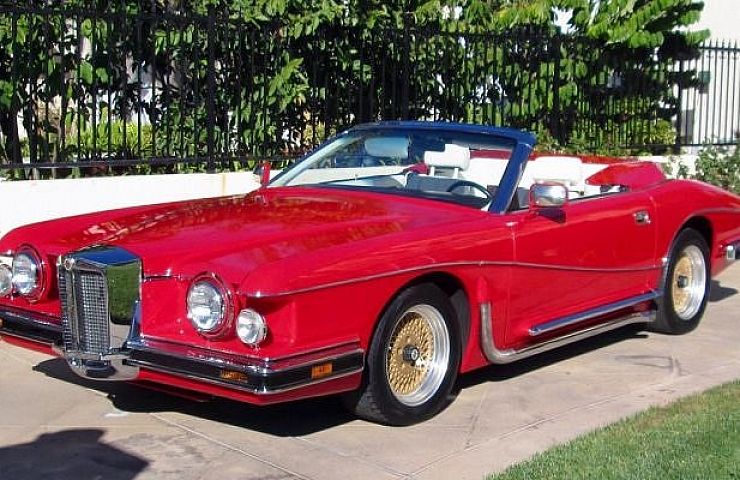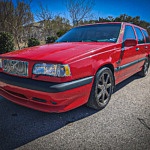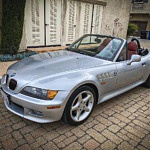Let’s get straight right away that the Stutz Bearcat II—like the one currently offered on eBay— has absolutely nothing in common with the original, which debuted in 1912. Stutz was a very prestigious automaker in its day, and the racy Bearcat helped make its name.
Essentially a racer for the road, the original Bearcat had minimal bodywork and a mighty 390-cubic-inch four that produced 60 horsepower—a lot of power for the day. The road versions departed only from the “White Squadron” racers in their fenders, lights, and trunk. If you really wanted to go nuts, a six-cylinder version was available. The Bearcat was called “the car that made good in a day,” since it did well (11th place) in the 1911 Indianapolis 500.
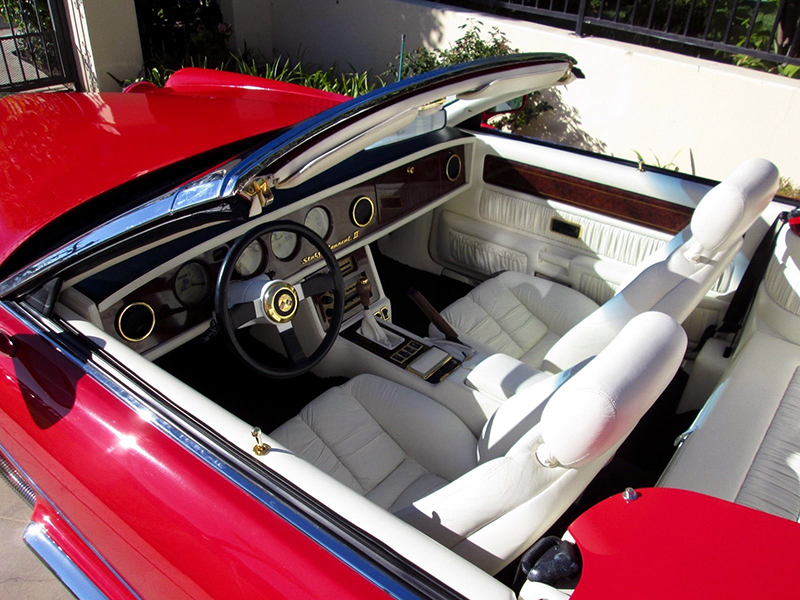
Bearcat IIs offer luxury interiors.
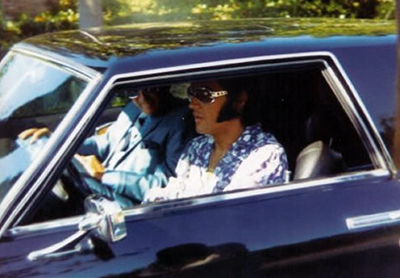
Elvis takes his Stutz Blackhawk prototype for a spin.
Then there was the hand-tooled Stutz Blackhawk coupe. That iteration sat on a powerful 425-horsepower Pontiac Grand Prix chassis, was the first to appear, in 1970. Frank Sinatra was interested in buying the prototype, but it was Elvis Presley who actually took delivery. Elvis’s car was sent to customizer George Barris for further personalization, and then Elvis added it to his fleet. He loved the car and used it frequently, at least until an accident (without Elvis aboard) in 1971. The restored car can now be seen at Graceland.
Stutz also built such exotics as the 25-foot-long armored Stutz Royale limousine (with a name borrowed from Bugatti). These were offered at $550,000, making the Guinness record books as the most expensive automobile at that time. Some found a home in the Middle East. Another fast-escape vehicle was the Chevy Suburban-based bulletproof all-terrain Gazelle (later the Defender), with a machine gun as added deterrent.
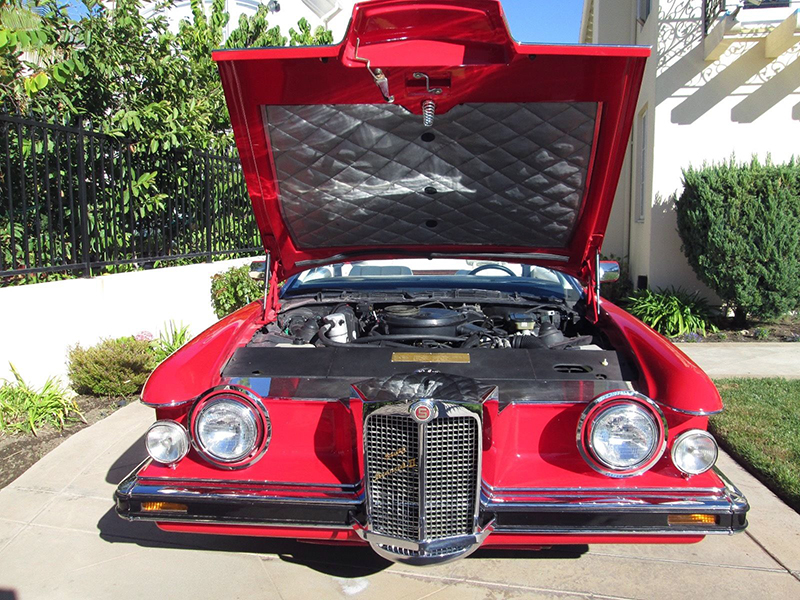
This Stutz Bearcat II has only 1,369 miles on it, and has never been titled.
Finally, we get to the Bearcat II, which is something else entirely. The Bearcat II was a “neo-classic” hand-built in Turin, Italy not for the race track but for cruising Hollywood Boulevard. Donning a leisure suit and chest medallion is optional. Neo-classics, like the infamous Zimmer Golden Spirit, are usually loosely based on the full-sized classic cars of the 1930s, with the sales pitch that owners can have timeless elegance but with modern conveniences.
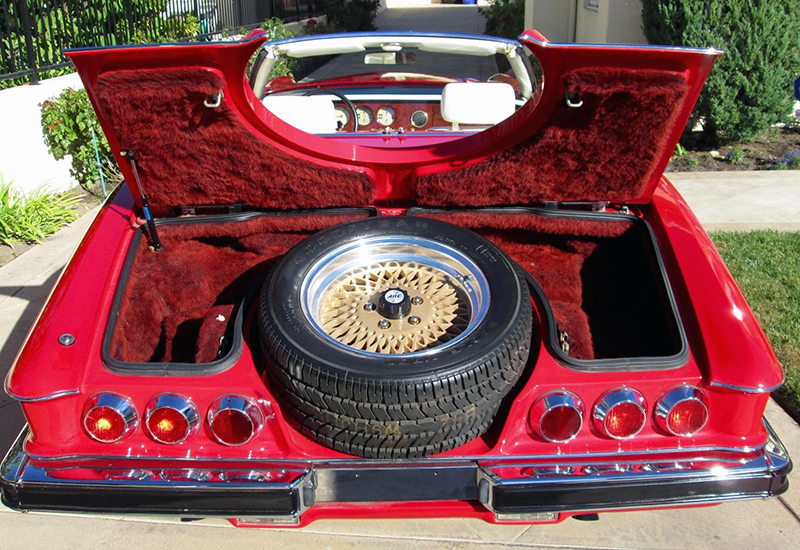
That luxury trunk is the last word in upscale motoring.
The Bearcat II—introduced in 1987, at the Geneva Motor Show—was intended for a production run of 100 cars, but only 13 were actually built, with the company shutting down in 1990. Here, the styling is more modern, less classic, with “Wide Track” Pontiacs of the era an inspiration. The GM F platform was used, and a 5.7-liter V-8 was under the hood. The body was a pioneering carbon fiber composite that resisted dents and corrosion—at the debut, the assembled press were handed hammers and asked to see if they could do damage. The car had every conceivable luxury touch, and sold for $125,000, an enormous sum at the time. The Sultan of Brunei bought the first two.
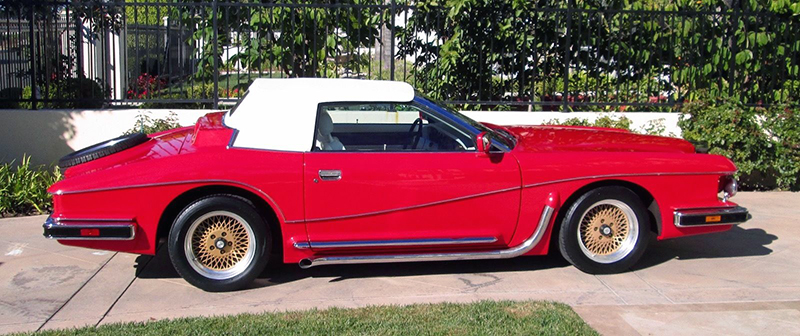
Neo-classic styling used cues from 1930s cars like Packard and Duesenberg, but the Bearcat II has more DNA from contemporary Pontiacs.
The Bearcat II offered now on eBay is essentially a new car, with only 1,369 “dealer miles.” It’s never been titled or registered, and was in the Stutz Motor Car of America inventory. It has bright red paint on that Diamond Fiber Composite body, offset by a white Italian leather interior. The original GM 350-cubic-inch V-8 is under the hood. Given the proven General Motors drivetrain, mechanical parts shouldn’t be a problem—though trim is going to be hard to find. But parts for the neo-Stutz do turn up.
The owner says it all with this call to action: “Own a piece of history!”

